Supporting materials
Download
Download this article as a PDF

This activity was presented at the Science on Stage Festival 2022![]()
Build a simple yet sensitive school seismometer for a hands-on exploration of seismology.
When an earthquake occurs, part of the released energy is sent out as seismic waves, which are classified into two types: body waves that penetrate the Earth and surface waves that travel along the surface of the Earth.
Body waves are composed of two types: primary (P) and secondary (S). P waves are compressional waves. They are the fastest-travelling seismic waves, and they shake the ground in the direction along which they travel. S waves are transverse waves; they travel more slowly and shake the ground perpendicularly to the direction of propagation.
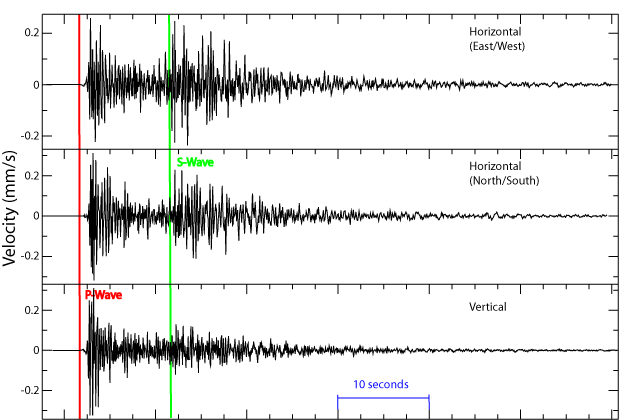
Surface waves travel more slowly than body waves. They shake the ground in more complex ways and are the most destructive.
Seismometers are ground-motion detector sensors. Coupled with an appropriate recording system, they can be used to detect and measure seismic waves.
Building a simple yet sensitive school seismometer is not a prohibitively demanding task, and it does not require expensive or difficult-to-find materials. However, it does take some time and requires clear instructions. A booklet with more detailed instructions for building and adjusting the seismometer is included in the supporting information.
This article focuses on the educational construction of a seismometer and its use to analyse the recorded seismic data. With a cross-curricular project like this, students can
The ground-motion detection sensor consists of the following:
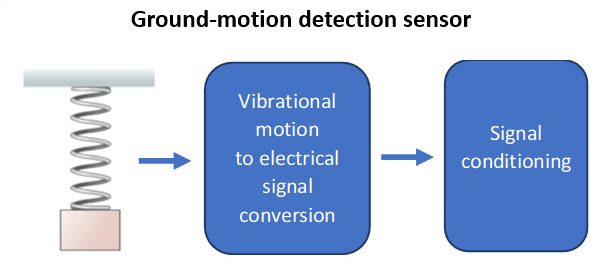
The recording system consists of the following:
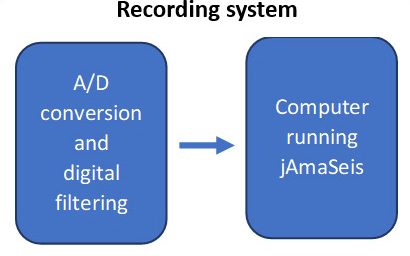
The mechanical vibrations of the mass–spring system are converted into an electrical signal based on the electromagnetic induction phenomenon. The principle of operation is demonstrated in this activity. It should take around 5 mins.

The operation of the electromagnetic braking system is also based on electromagnetic induction.[4] The mechanical energy of a magnet moving near an aluminium plate is quickly dissipated in the form of heat due to eddy currents induced on the aluminium plate. This can be demonstrated using a pendulum with a cylindrical bob and a neodymium magnetic disk attached to the base. If you let the pendulum vibrate, its motion continues for a long time, but is minimized rapidly if you place a small aluminium plate at a short distance beneath the cylinder.
As seismic waves travel through the Earth, the energy they carry is absorbed by crustal rocks. Absorption is frequency-dependent: the higher the frequency of seismic waves, the faster the energy they carry weakens with distance. Therefore, only low-frequency seismic waves from distant earthquakes can reach and excite the seismometer. So, for a seismometer to be able to detect distant earthquakes, the natural frequency of its mass–spring system must be adjusted to a value around 1 Hz. The ways in which this frequency adjustment can be implemented during the construction of a seismometer is the subject of this activity. It should take no more than 20 mins.
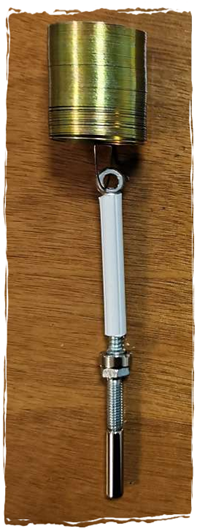
See the provided instruction booklet for full assembly instructions for the seismometer. This can be done with the students as part of a science project or can be completed by the teacher or technician to provide an instrument for students to explore in class.
A simpler, albeit less sensitive, seismometer (TC-1 model[6]) can be built based on instructions that can be found online or even purchased as a kit.
To take full advantage of the educational benefits, the involvement of students in the construction of a seismograph is a key step of the project. However, analysis of recorded seismic data can be carried out even if the students have not built a seismometer by themselves.
In this activity, students will analyse seismic data and calculate the distance to the epicentre of an earthquake. The free jAmaSeis[3] software has the ability to receive and display seismic data not only from local stations, but also from a list of online school and professional seismic stations. Digitally stored seismic data can also be used. The main window of jAmaSeis is the Stream View, which emulates a seismogram from a classic drum recorder. A screenshot of a seismogram from 29 March 2022 is shown in the next image. It shows the seismic data of an earthquake that occurred in Western Greece, as captured by the LCIG seismometer installed at the Laboratory Center of Physical Sciences of Igoumenitsa (coordinates: 39.5°Ν, 20.27°Ε).
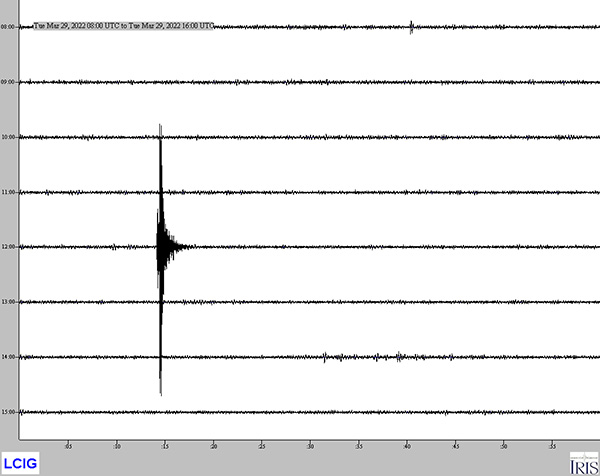
Using jAmaSeis software, students can
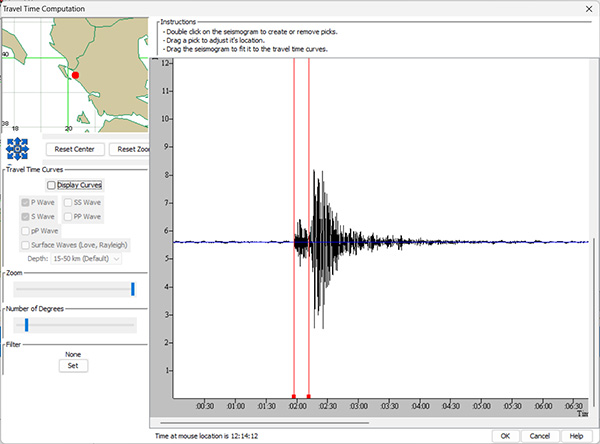
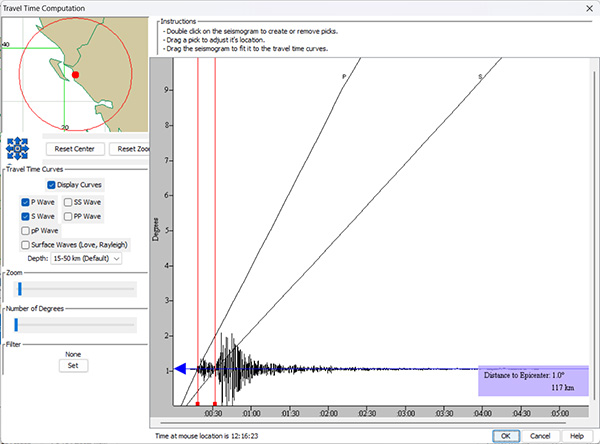
A school project concerning the construction of a seismometer has significant educational benefits during its construction and adjustment and later in using it to analyse seismic data. Teachers can find inspiration to teach students about aspects of electromagnetism, oscillations, geology, and even technology.
[1] Instructions for building and a description of a seismometer amplifier: https://www.instructables.com/DIY-Seismometer/
[2] The NERDaq software: http://ru.auckland.ac.nz/files/2014/07/nerdaqII.zip
[3] The IRIS jAmaSeis software and manual: https://www.iris.edu/hq/Wiki/jAmaSeis_Manual
[4] Hawkes R et al. (2019) Physics for Scientists and Engineers, An Interactive Approach 2nd edition. Nelson Canada. ISBN: 0176587195.
[5] Instructions for building and a description of a TC-1 school seismometer: https://tc1seismometer.wordpress.com/
[6] Earthquake catalogue search function from the University of Athens, Seismological Lab: http://www.geophysics.geol.uoa.gr/stations/gmapv3_db/index.php
I love the idea of building a cheap, affordable, simple seismometer that could be built with ease for the teaching of waves in this context. Science is always better if explained with practical and even better if a build is involved. This enables students to investigate, calculate and look at this topic in depth.
This activity would make a nice science club project or a practical for higher-level or higher-ability physics students to build and test. It could be used as a science fair project. It would make a really nice cross curricular project for Science, geography and technology/engineering sciences.
Mike Sands, Freelance tutor and science advisor, UK
Download this article as a PDF